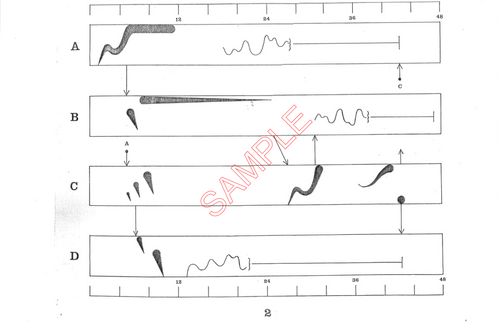Inside Out, Outside Out, for four violas or four marimbas includes four scores.
Want it now? Click here to purchase a digital copy of this product.
Review from Percussive Notes:
“Inside Out, Outside Out (yes, no , yes, yes),” for four violas or four marimbas, is a challenging, cacophonous, and viscerally satisfying work. Before his passing in 2013, composer Edward Miller established a reputation for embracing experimental approaches to music-making, and while this piece lacks some of the eye-catching visual stimulation of his graphic scores, it is nonetheless an aural spectacle when performed well.
The entire piece is a four-part canon at the unison, played four times with the voices entering at different positions each time and with each part always separated by just an eighth note. With the dynamic marked “ALWAYS LOUD” and at a blistering tempo, the piece will require an extremely high level of coordination and preparation by the ensemble in order to maintain clarity and balance. And please note: maintaining clarity will be essential, as the development of the piece lies hidden in the gradual, smeary harmonic evolution that Miller has cleverly constructed.
As a listener, I heard parallels to several pieces by Steve Reich, Louis Andriessen’s “Workers Union” (albeit with Miller’s own harmonic sensibilities), and (the clearest connection of all) Frederic Rzewski’s “Les Moutons de Panurge.” The rehearsal challenges of this piece will be very similar to those of “Les Moutons,” in that the ensemble will undoubtedly need to tackle the piece in unison before braving the deeper waters of separating the canon’s voices.
An additional wrinkle to “Inside Out, Outside Out” is that the performers are instructed to surround the audience (similar to other Edward Miller pieces), posing yet another challenge to maintaining the quartet’s cohesion but providing listeners with a specialized experience that elevates the four iterations of the material beyond the well-worn depths of static minimalism.
I highly recommend this work as a welcome addition to any advanced university percussion ensemble program, particularly those populated by graduate students. Preparing for the performance will undoubtedly be labor-intensive, but the result will be well worth it, and will provide some long-overdue prominence to a deserving piece and composer.
—Brian Graiser
Demo:







